Idea by
Maria Zoumaki
Call for ideas 2018
The Bug
The Bug
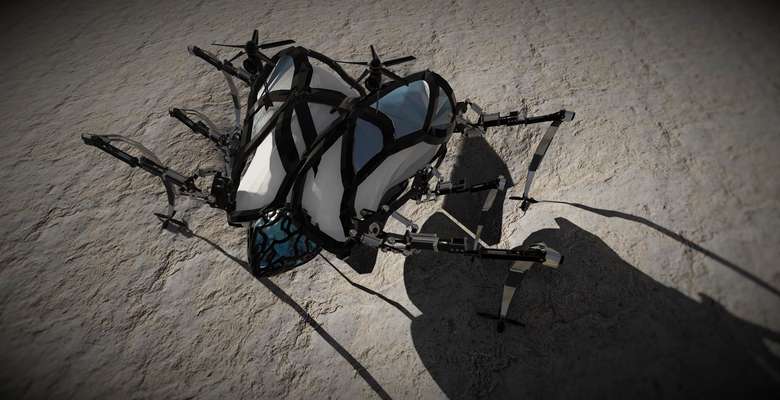
This project is influenced by living organisms of nature, and in particular the beetles. This is because if we observe some organisms that evolved to adapt to environmental developments, we will observe their incredible resistance to extreme environmental conditions.
Focusing to post human and his future needs, the idea proposes an alternative motor home, with a structure and a form similar to the structure of the beetles. This idea is this idea refers to the future nomad and environmental immigrant. Τhe environmental conditions studied were strong winds and hurricanes, earthquakes, flood and drought.
Using technology and automatism systems we could come closer to mimic nature and its remarkable tolerance to natural disasters, and save millions of lives.
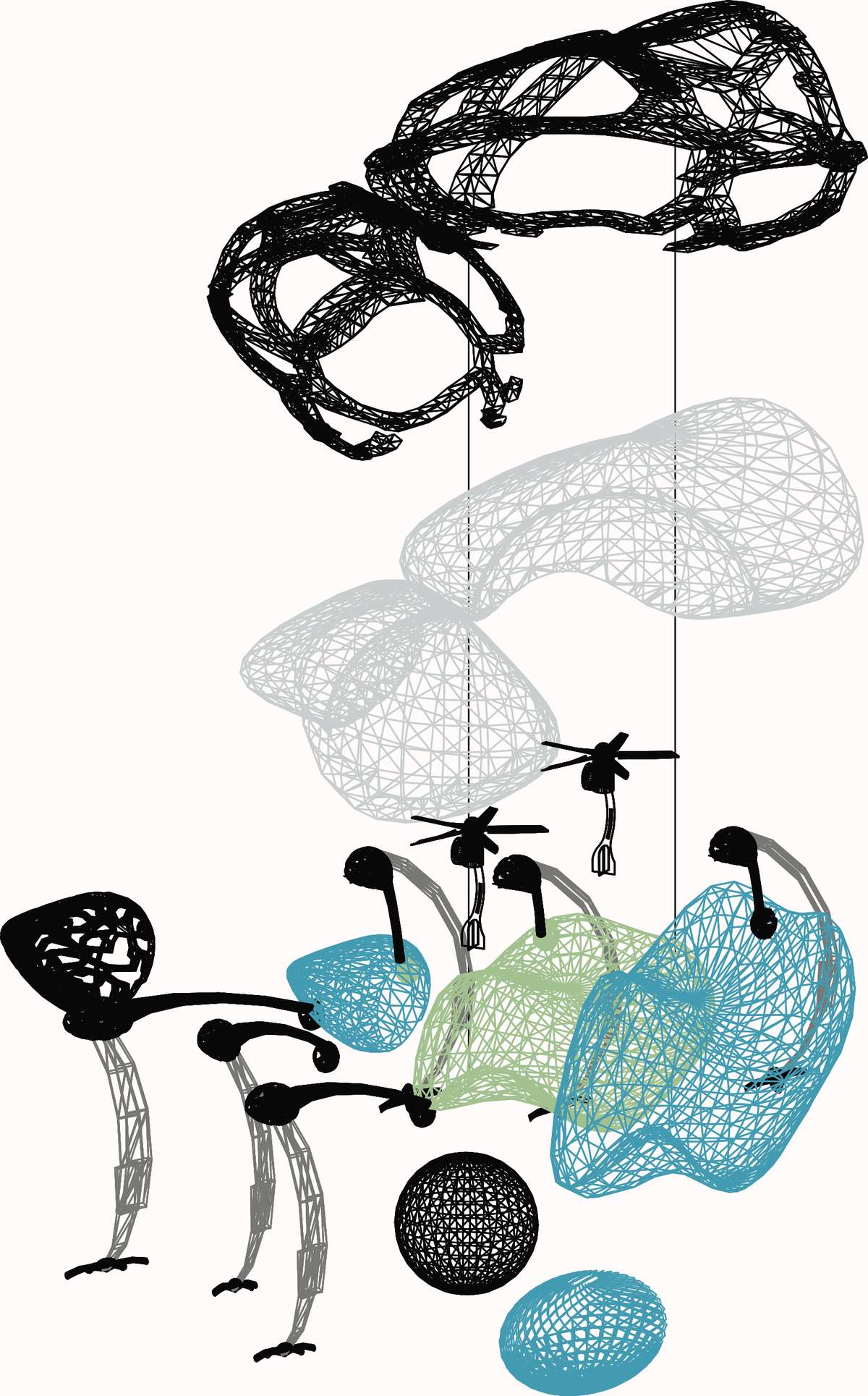
Parts of the "Bug" motor home_
Following the basic structure of the beetles, which is particularly resistant to extreme environmental conditions, such as very strong winds, a hard shell was placed around the most vulnerable spaces, such as the sleeping areas. A basic frame with photovoltaic panels and automation mechanisms encircles the whole structure. Arms were placed on the sides of the frame instead of wheels to allow the structure to move in areas where the wheel can not move.

Energy Independence_
The motor home is energy-independent. Photovoltaic panels are located at the top of the outer frame as well as wind turbines. There is a system which, when the structure moves into the sea, will use it to move with the force of the ocean current (catamaran system).
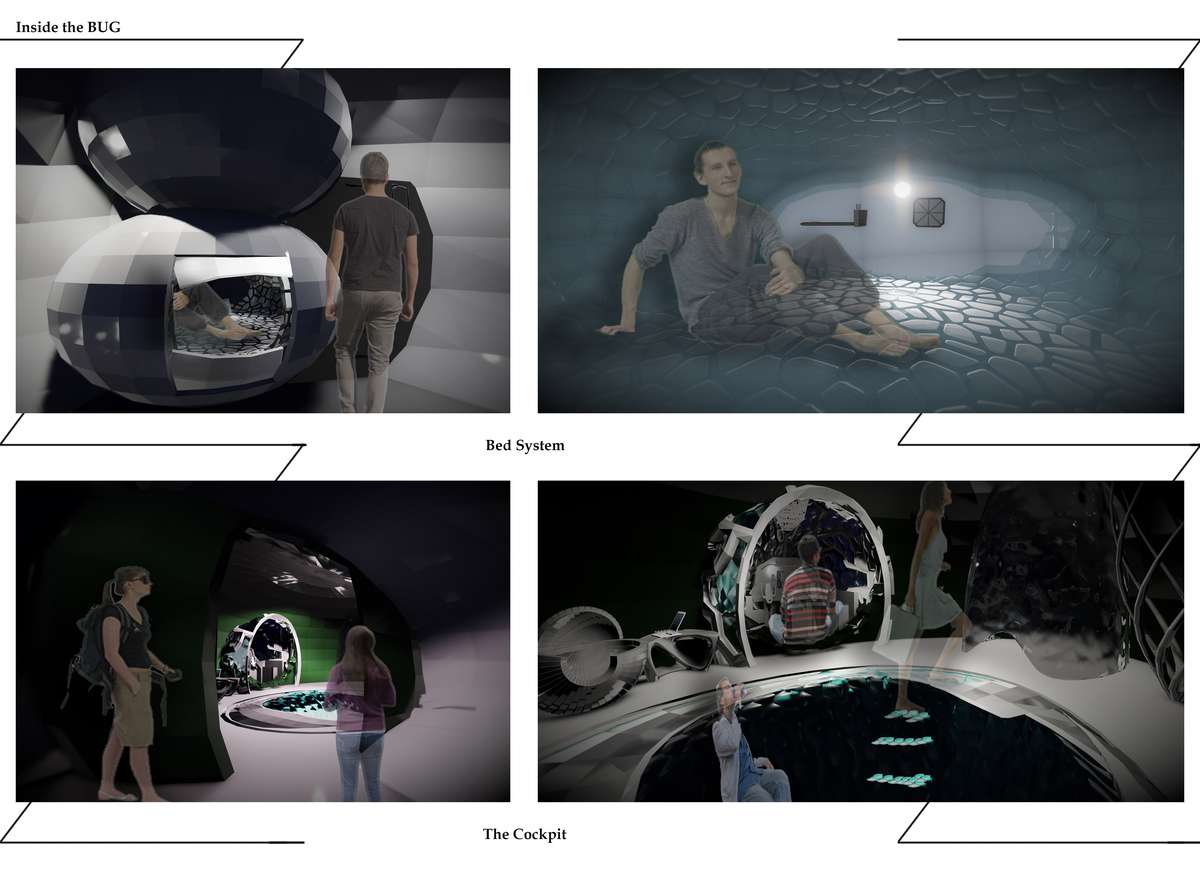
The interior of the "Bug"_
The "Bug" can host one to four people. There is one main room, the one with the cockpit, and under the "elytras" of the Bug two areas for sleep. There are four capsules that contain the beds which are extra protected with strong material. Because the most vulnerable moment of a human being is at bedtime, extra protection for sleeping space was chosen.


The result_
Briefly, the main idea is a construction that can move under any condition and take its inhabitant away from any danger. The robotic frame, which includes a system of rails so the arms can move with flexibility, can carry out any movement the circumstances demand.
The Bug
The Bug

This project is influenced by living organisms of nature, and in particular the beetles. This is because if we observe some organisms that evolved to adapt to environmental developments, we will observe their incredible resistance to extreme environmental conditions.
Focusing to post human and his future needs, the idea proposes an alternative motor home, with a structure and a form similar to the structure of the beetles. This idea is this idea refers to the future nomad and environmental immigrant. Τhe environmental conditions studied were strong winds and hurricanes, earthquakes, flood and drought.
Using technology and automatism systems we could come closer to mimic nature and its remarkable tolerance to natural disasters, and save millions of lives.
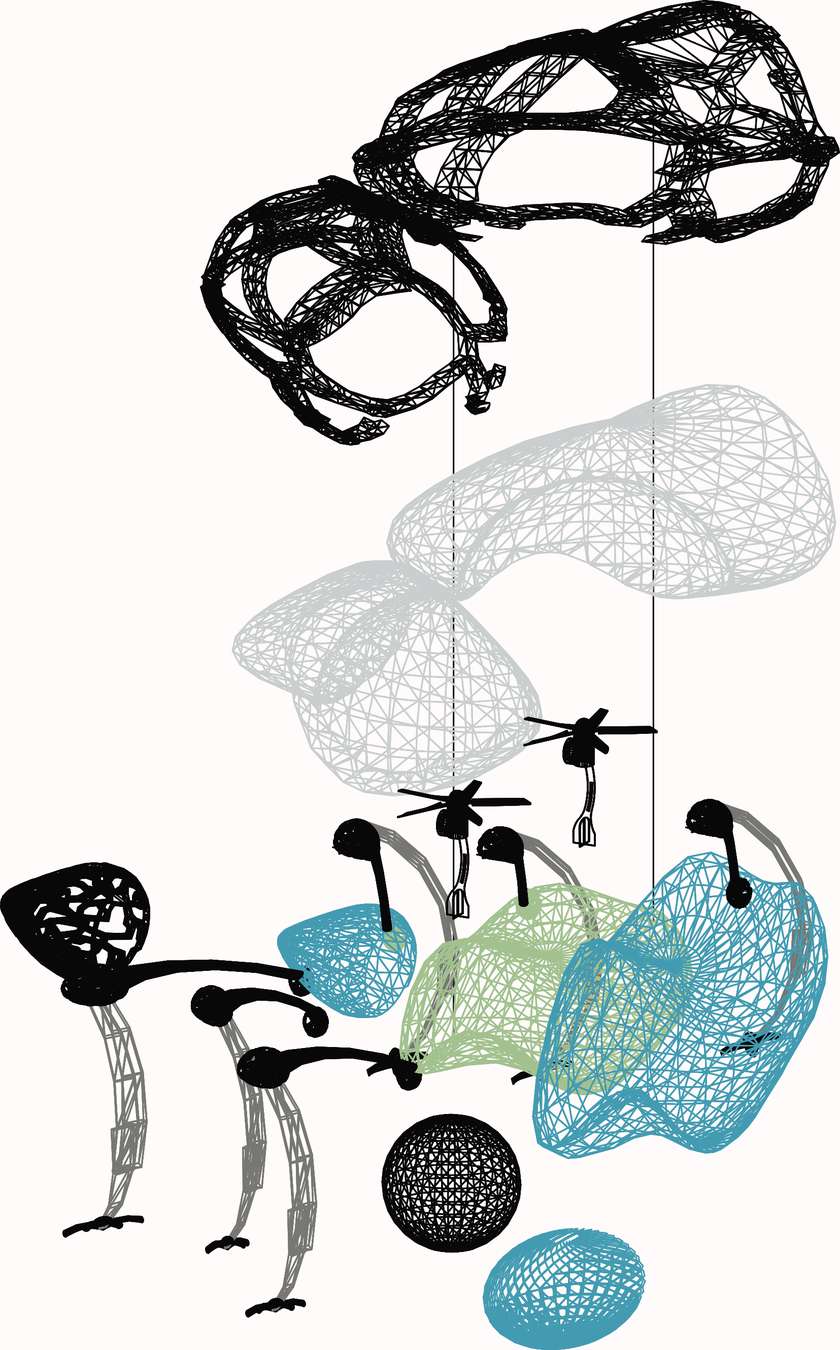
Parts of the "Bug" motor home_
Following the basic structure of the beetles, which is particularly resistant to extreme environmental conditions, such as very strong winds, a hard shell was placed around the most vulnerable spaces, such as the sleeping areas. A basic frame with photovoltaic panels and automation mechanisms encircles the whole structure. Arms were placed on the sides of the frame instead of wheels to allow the structure to move in areas where the wheel can not move.
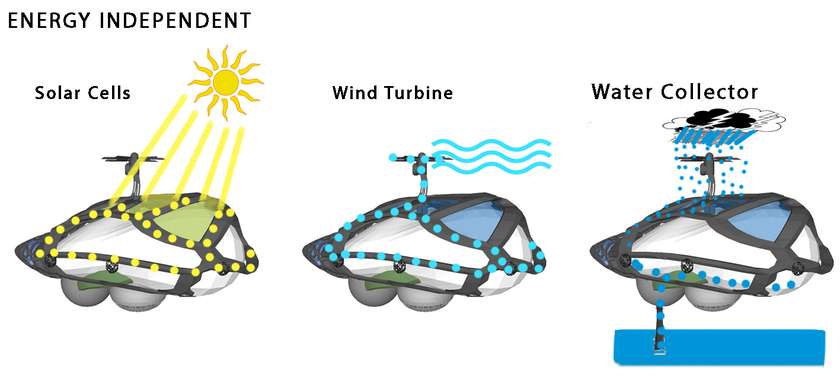
Energy Independence_
The motor home is energy-independent. Photovoltaic panels are located at the top of the outer frame as well as wind turbines. There is a system which, when the structure moves into the sea, will use it to move with the force of the ocean current (catamaran system).
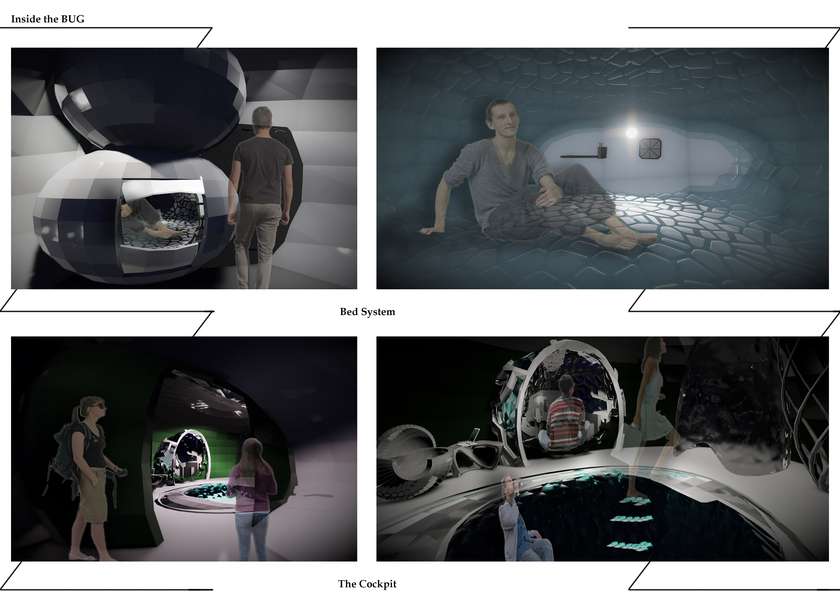
The interior of the "Bug"_
The "Bug" can host one to four people. There is one main room, the one with the cockpit, and under the "elytras" of the Bug two areas for sleep. There are four capsules that contain the beds which are extra protected with strong material. Because the most vulnerable moment of a human being is at bedtime, extra protection for sleeping space was chosen.


The result_
Briefly, the main idea is a construction that can move under any condition and take its inhabitant away from any danger. The robotic frame, which includes a system of rails so the arms can move with flexibility, can carry out any movement the circumstances demand.